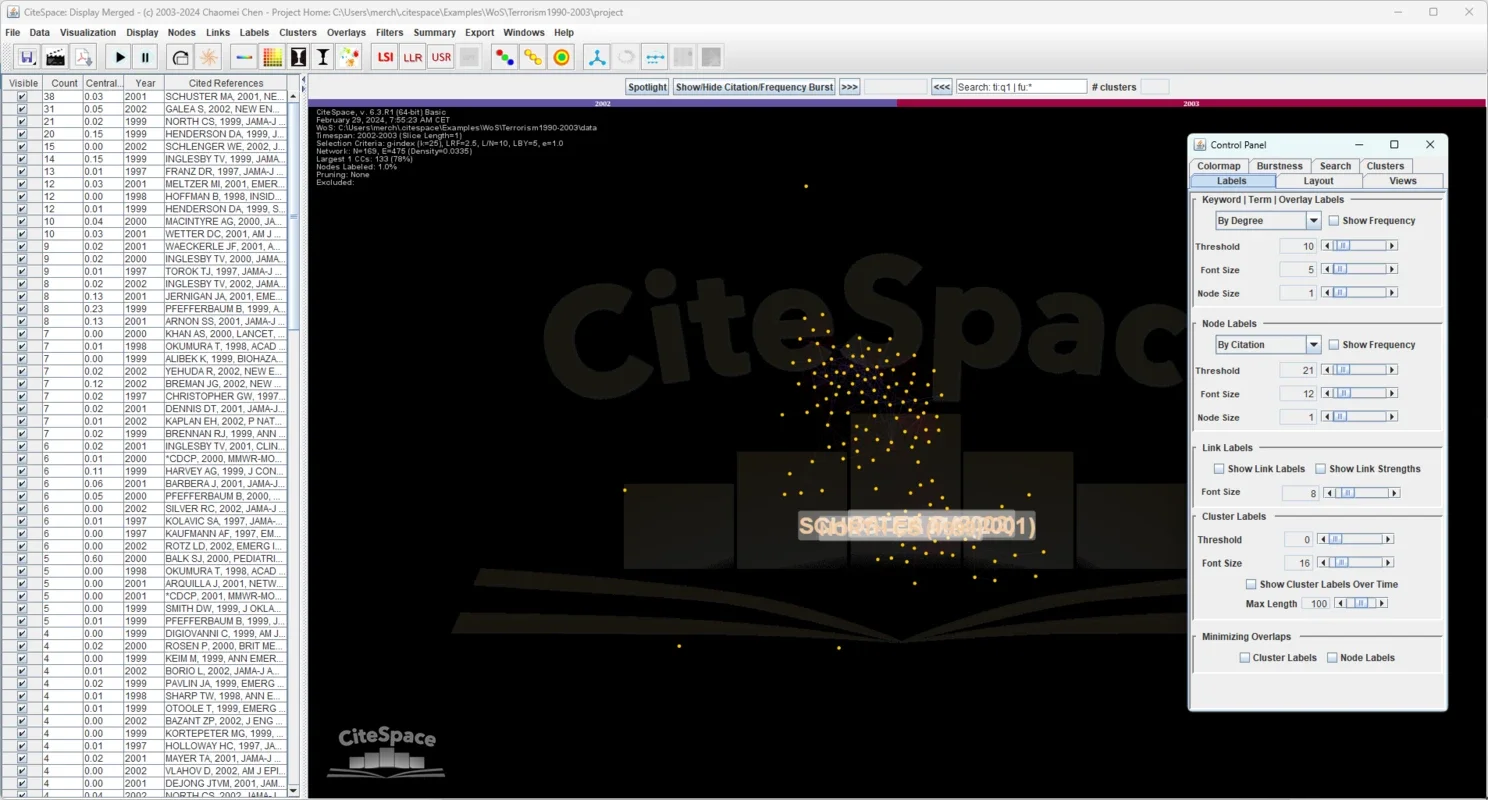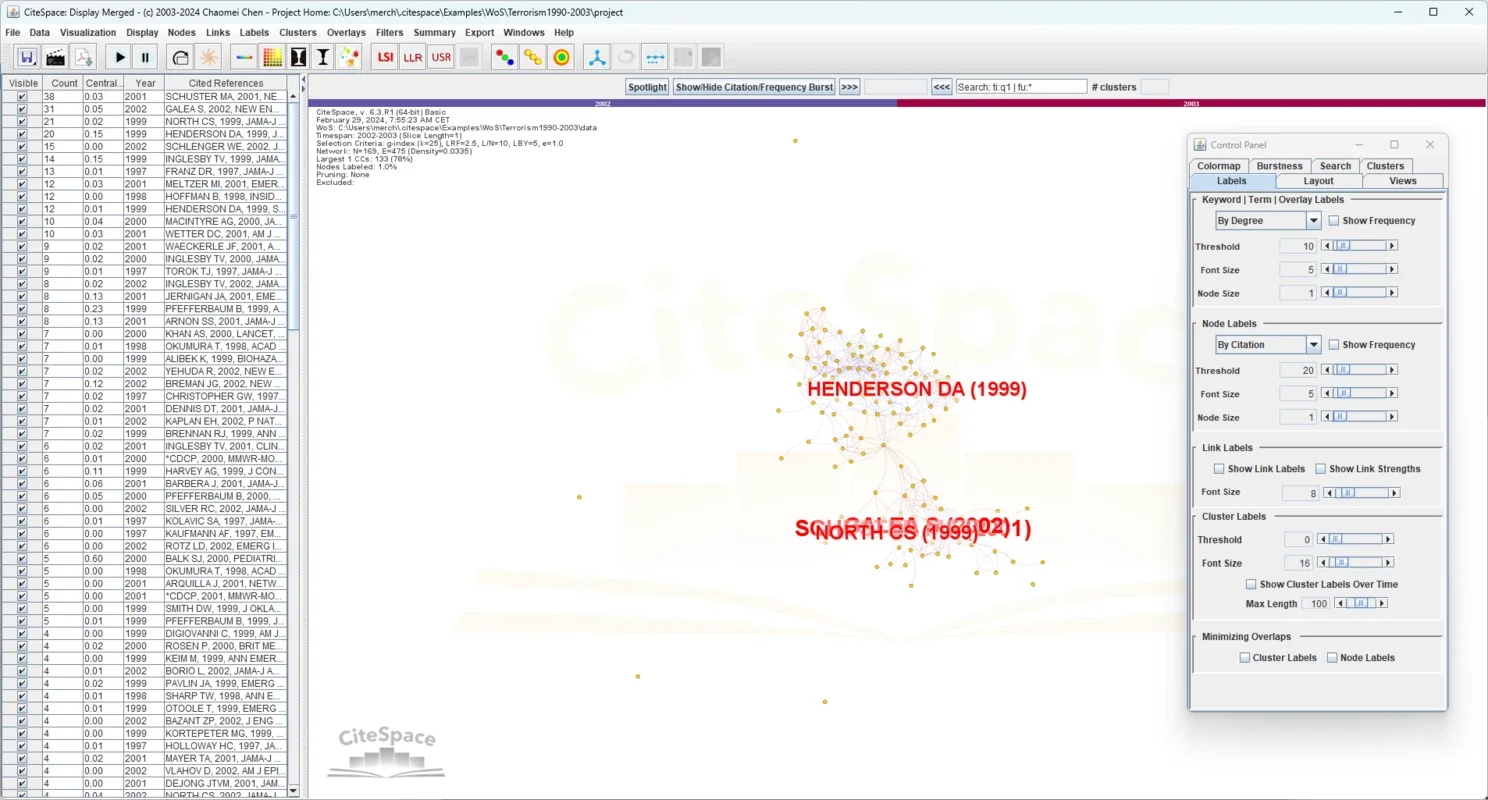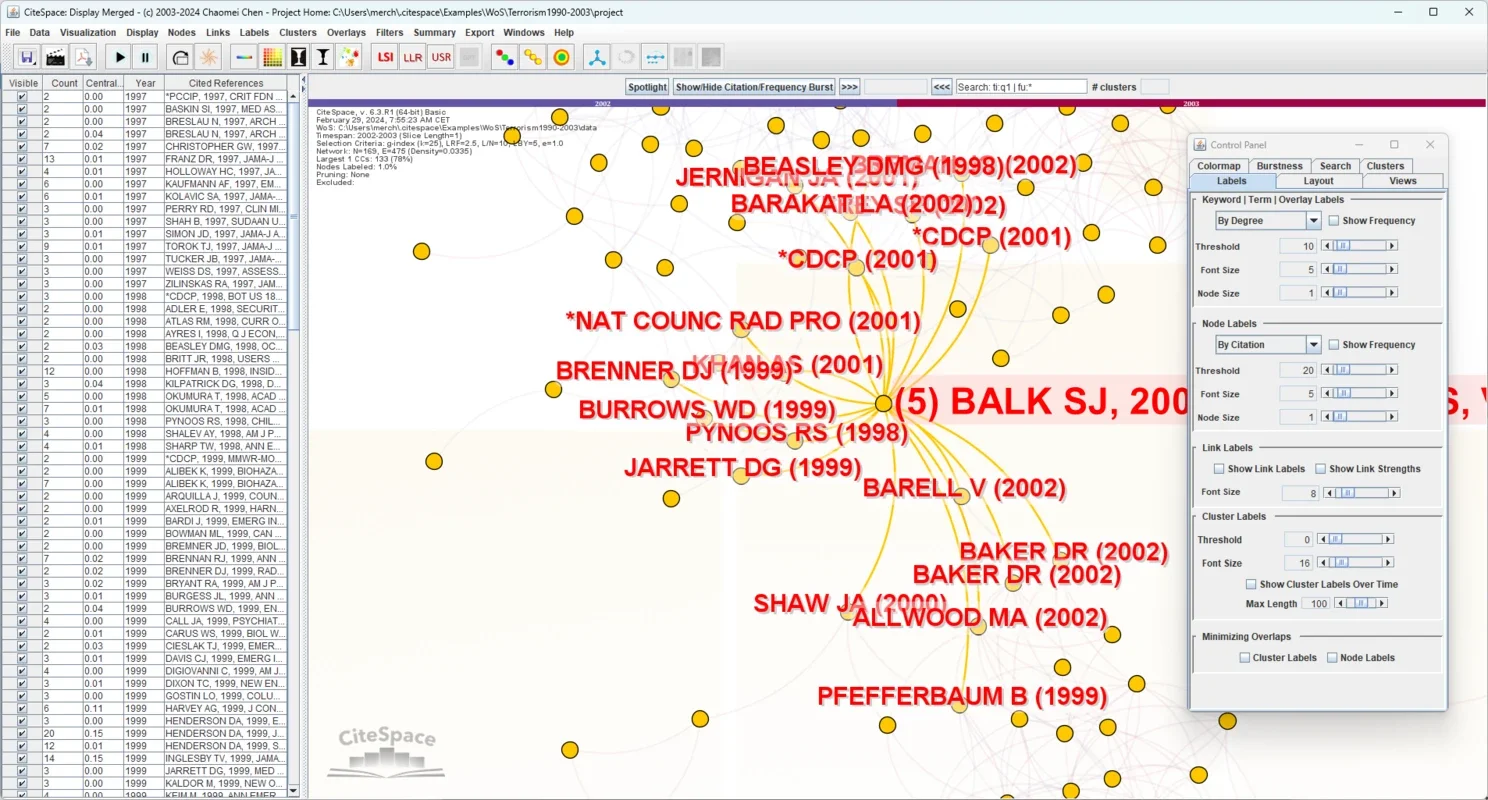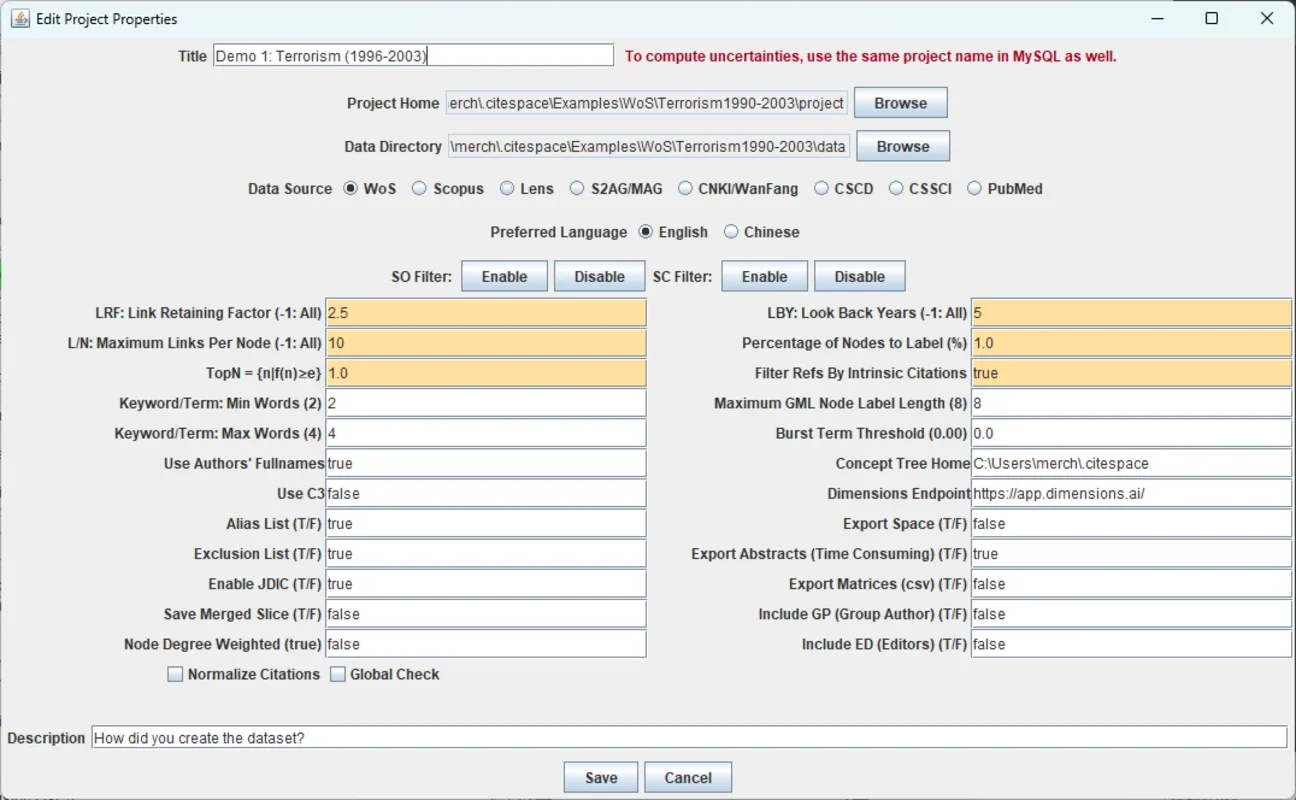CiteSpace App Introduction
CiteSpace is a powerful software tool designed for the analysis and visualization of structural and temporal patterns within scientific fields. It offers a unique perspective on knowledge development, allowing researchers to explore the evolution of research areas over time and identify key trends. Unlike many other research analysis tools, CiteSpace excels at presenting complex data in a visually intuitive manner, making it accessible to researchers across various disciplines.
Understanding CiteSpace's Capabilities
CiteSpace's core functionality revolves around the analysis of citation data. By processing citation networks from diverse sources, including Web of Science, Scopus, Dimensions, Lens, PubMed, CNKI, and ProQuest Dissertations and Theses, CiteSpace constructs dynamic visualizations that reveal the interconnectedness of research papers, authors, institutions, and concepts.
This capability allows researchers to:
- Identify Key Influencers: Pinpoint the most influential researchers and their contributions to a specific field.
- Trace the Evolution of Ideas: Visualize how concepts and research themes have evolved over time, identifying pivotal moments and shifts in focus.
- Discover Emerging Trends: Uncover nascent research areas and predict future directions in a field.
- Analyze Collaboration Networks: Understand the collaborative relationships between researchers and institutions.
- Map Geographic Distribution: Visualize the geographic distribution of research activity, revealing regional strengths and collaborations.
Data Sources and Input
CiteSpace's versatility extends to its ability to handle various data formats. While it readily integrates with major bibliographic databases, it also supports the import of data from less structured sources, provided the data contains the necessary citation information. This adaptability makes CiteSpace a valuable tool for researchers working with diverse data sets.
The software's ability to process large datasets efficiently is a significant advantage. Researchers can analyze extensive citation networks without encountering performance bottlenecks, allowing for comprehensive and in-depth analysis.
Visualizing Research Trends: CiteSpace's Output
CiteSpace's strength lies in its ability to transform complex citation data into visually compelling and informative representations. The software generates interactive visualizations, allowing users to explore the data dynamically and uncover hidden patterns. These visualizations typically include:
- Timeline Views: Show the evolution of research themes over time, highlighting periods of intense activity and significant shifts in focus.
- Cluster Views: Group related papers and concepts together, revealing the underlying structure of the research field.
- Network Maps: Illustrate the relationships between different elements in the research network, such as authors, papers, and institutions.
- Geographic Maps: Overlay research activity onto geographic maps, providing a spatial perspective on research distribution.
These visualizations are not static images; they are interactive, allowing users to zoom, pan, and select specific elements to explore in greater detail. This interactive nature is crucial for uncovering nuanced patterns and insights that might be missed in static representations.
Comparing CiteSpace to Other Tools
While several other tools offer citation analysis capabilities, CiteSpace distinguishes itself through its unique combination of features. Compared to tools that primarily focus on bibliometric indicators, CiteSpace offers a more nuanced and visual approach, allowing researchers to explore the temporal and structural dimensions of research fields. Unlike tools with limited visualization capabilities, CiteSpace provides rich interactive visualizations that facilitate a deeper understanding of complex research networks.
For instance, while tools like VOSviewer excel at visualizing co-citation networks, CiteSpace adds the crucial temporal dimension, allowing researchers to track the evolution of these networks over time. This temporal perspective is critical for understanding how research fields have changed and evolved.
Practical Applications of CiteSpace
CiteSpace's applications span a wide range of research domains. Researchers in various fields, including:
- Computer Science: Analyzing the evolution of programming languages and software development methodologies.
- Medicine: Tracking the development of medical treatments and understanding the impact of research on clinical practice.
- Social Sciences: Studying the evolution of social movements and understanding the dynamics of social networks.
- Environmental Science: Analyzing research on climate change and understanding the evolution of environmental policies.
can leverage CiteSpace to gain valuable insights into their respective fields. The software's ability to handle large datasets and generate insightful visualizations makes it an invaluable tool for researchers seeking to understand the dynamics of their chosen research area.
Conclusion
CiteSpace represents a significant advancement in research analysis and visualization. Its unique combination of comprehensive data processing capabilities and intuitive visual representations empowers researchers to explore the complexities of scientific fields in unprecedented detail. By providing a dynamic and interactive approach to understanding research trends, CiteSpace helps researchers identify key influencers, track the evolution of ideas, and uncover emerging trends, ultimately contributing to a deeper understanding of knowledge development.
CiteSpace is not merely a tool for analyzing citations; it's a gateway to understanding the dynamic landscape of research, revealing the intricate connections and patterns that shape our understanding of the world.




